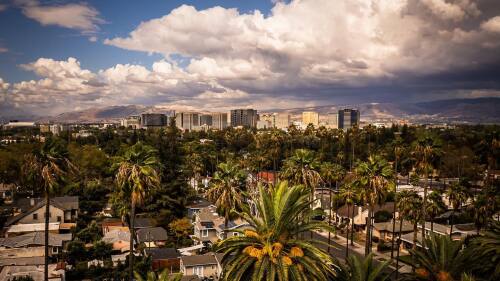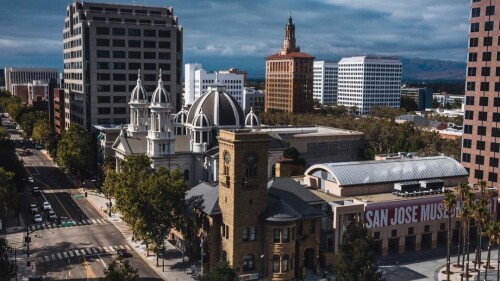Despite being early in the 20th century, the 1910s brought new inventions, now-historical landmarks, and notable San Joseans into our world.
Let’s turn back time with another decade of San Jose’s history and peek into the great 408 during this era.
📈 Population: 28,946
🗳️ Mayors: Thomas Monahan (1910-1914), Fred R. Husted (1914-1916), Elmer E. Chase (1916-1918), Charles M. O’Brian (1918-1920)
1910 — The first motor bus line in California started at Mt. Hamilton. The current SJSU Tower Hall was built to replace the previous one damaged by the 1906 earthquake.
1911 — East San Jose was incorporated into the City of San Jose. Heavy rain overflowed Penitencia Creek, which flooded most of downtown San Jose. McDonnell Hall, the original home of Our Lady of Guadalupe Parish Chapel, was built.
1912 — Charles David “Doc” Herrold began the first radio broadcast in the then-Garden City Bank Building. Charles’ wife, Sybil, played music from her husband’s broadcasts and is considered one of the first radio DJs.
1913 — Palm Haven was established as a planned project of 130 residences.
1914 — The Five Wounds Portuguese National Parish was established. Santa Clara County Library was founded on the corner of Market + St. James streets.
1915 — Collection of artifacts for the Rosicrucian Egyptian Museum began.
1916 — The Native Daughters of the Golden West built the Pioneer Cabin in Alum Rock Park. The oldest building at Bellarmine College Preparatory, Polhemus House, was constructed.
1917 — The historic Twohy Building, located on Paseo de San Antonio, was built.
1918 — Shirlie Montgomery, one of the most renowned pro-wrestling photographers from the 1930s-1950s, was born. San Jose voted to go “dry” before Prohibition as a war measure.
1919 — The completed Five Wounds Portuguese National church was consecrated.













